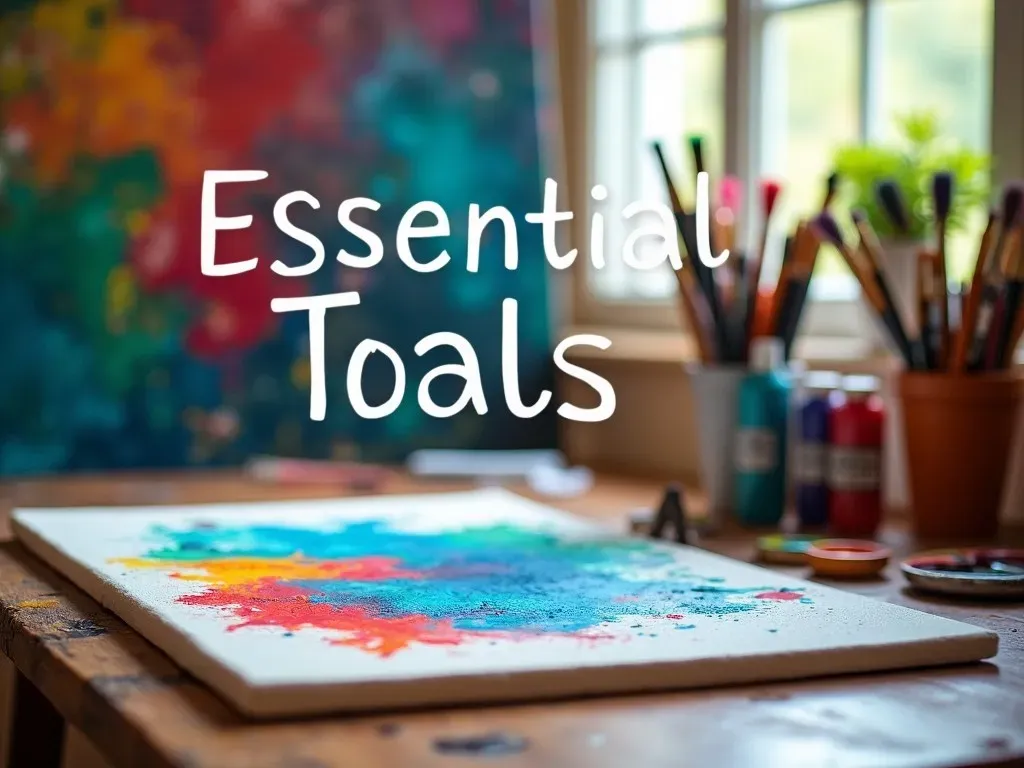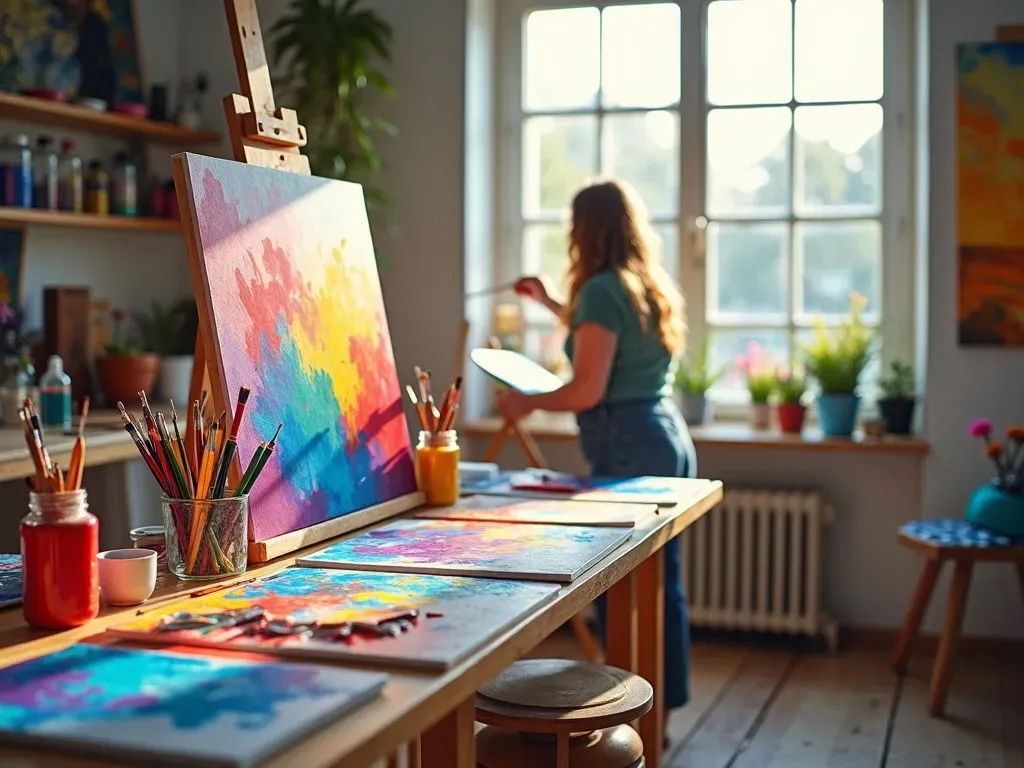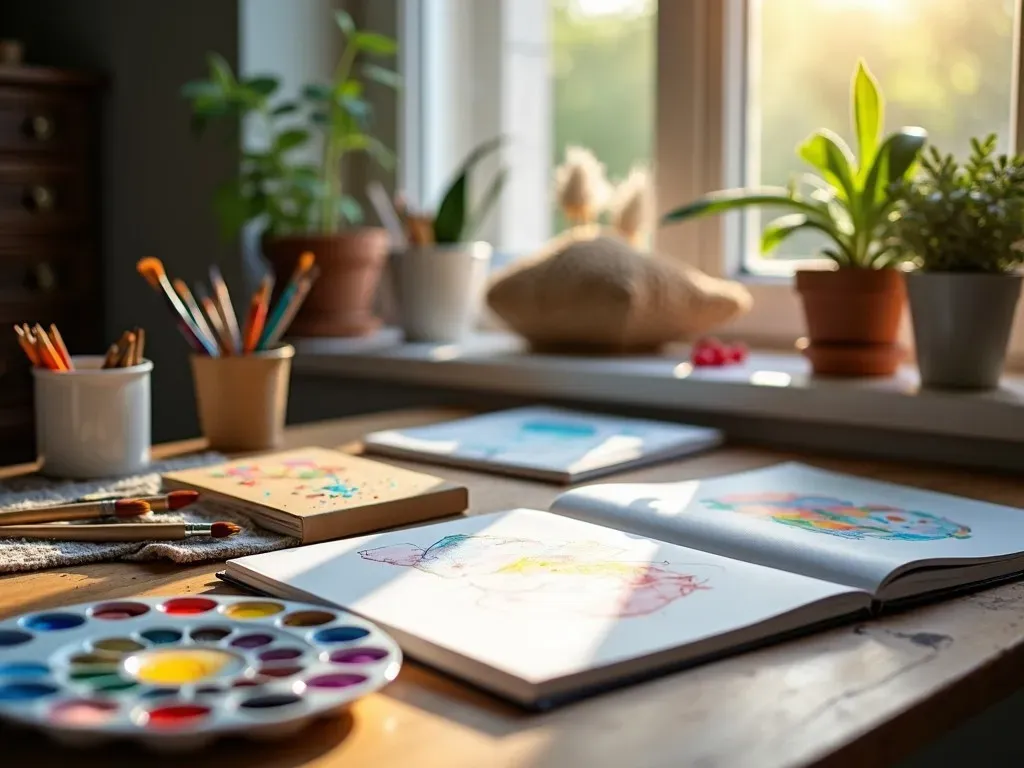Acrylic painting is a versatile and accessible medium that allows artists of all levels to explore their creativity. Whether you’re a complete novice or looking to refine your skills, this article provides essential acrylic painting tips that will help you on your creative journey.
Understanding Acrylic Paint
Acrylic paint is a fast-drying paint made of pigment suspended in acrylic polymer emulsion. One of its most attractive features is its versatility; it can be thinned with water, used straight from the tube, or mixed with various mediums to create different effects. The paint is non-toxic and dries quickly, which makes it ideal for beginners looking to experiment without long waiting periods.
Key Characteristics of Acrylic Paint
| Feature | Description |
|---|---|
| Drying Time | Fast-drying |
| Water Soluble | Can be thinned and cleaned with water |
| Versatility | Can mimic watercolors or oil paints |
| Finish | Dries to a flexible, water-resistant finish |
| Toxicity | Non-toxic, suitable for beginners |
Essential Tools and Supplies
Having the right tools is crucial when starting your acrylic painting journey. Here’s a list of fundamental Supplies you’ll need:
- Acrylic Paints (varied colors)
- Brushes (synthetic brushes are ideal)
- Palette (for mixing colors)
- Canvas or acrylic paper
- Water container (for rinsing brushes)
- Rags or paper towels
- Palette knife (for mixing and applying paint)

Reference Video
Acrylic Painting Tips for Beginners
1. Start with a Limited Color Palette
Using a limited palette of primary colors (red, blue, yellow) along with black and white will help you understand color mixing without getting overwhelmed by choices. Mixing colors from these basic hues will give you a broader range with fewer paints.
2. Master Color Mixing
It’s essential to learn how to mix colors effectively. Begin by creating a color wheel. This will help you understand complementary colors and how they interact on the canvas.
3. Work on Different Surfaces
The beauty of acrylics is that they can be painted on various surfaces—canvas, wood, and even glass. Experiment with different textures to find what works for your style.
4. Use the Right Brush Techniques
Invest in different types of brushes, such as flat, round, and filbert. Each type offers different effects:
- Flat Brushes: Ideal for broad strokes and washes.
- Round Brushes: Great for detail work and lines.
- Filbert Brushes: Versatile for blending and shaping.
Familiarize yourself with brush strokes like stippling, dry brushing, and washes to expand your repertoire.
| Brush Type | Usage |
|---|---|
| Flat | Broad strokes, washes |
| Round | Detail work, outlines |
| Filbert | Blending, creating shapes |
5. Experiment with Water and Mediums
Acrylic paints respond well to water, meaning you can adjust the consistency based on your technique. Adding water can help create watercolor-like washes, whereas acrylic mediums can enhance texture or drying times.
6. Layer Your Paint Wisely
Acrylics dry quickly, allowing you to build layers without waiting long. However, ensure that each layer is dry before applying the next. This technique can create depth and richness in your artwork.
Advanced acrylic painting techniques
7. Incorporate Mixed Media
Mixing acrylics with other materials like pastels, charcoal, or collage elements can create exciting textures and effects. Experiment with layering and applying various materials to create unique artwork.
8. Use Glazing Techniques
Glazing involves applying thin layers of transparent paint over dried layers. This can create luminous effects and depth. Use glazing mediums to thin your paint and achieve the desired transparency.
9. Try Impasto for Textures
Impasto is a technique where paint is applied thickly, creating texture on the canvas. Use palette knives or thick brushes to build up layers of paint that retain brush or knife strokes.
10. Keep Your Work Area Organized
A cluttered workspace can hamper creativity. Ensure that all your tools, paints, and canvases are organized and within reach to keep your focus on painting.

Frequently Asked Questions (FAQ)
Q1: How do I clean my brushes after using acrylic paint?
A: Rinse your brushes in water immediately after use. If the paint has dried, try soaking them in warm water for a short while before gently washing.
Q2: Can I use acrylic paint on paper?
A: Yes! Acrylic paint is great on paper, but choosing a heavier paper or canvas paper designed specifically for acrylic use is advisable to prevent warping.
Q3: What should I do if my paint dries too quickly?
A: Consider using a stay-wet palette, which helps keep your paint moist for longer periods. You can also add a slow-drying medium to your paint to extend its working time.
Q4: How do I store my acrylic paintings?
A: Always store your paintings in a dry, flat place. If they need to be stacked, place a protective layer (like a cloth or paper) between them to avoid any potential damage.
Q5: Where can I find additional resources on acrylic painting techniques?
A: Many online platforms provide helpful tutorials. A few recommended websites for further exploration are:

In Summary
Acrylic painting offers infinite possibilities for expression and creativity. By applying these acrylic painting tips, experimenting with different Techniques, and practicing regularly, you’ll develop your unique style, making the journey more enjoyable and fulfilling. Embrace your art, and let each stroke on the canvas tell your story!
